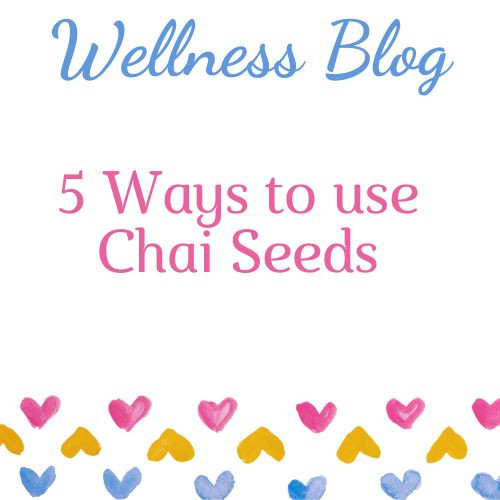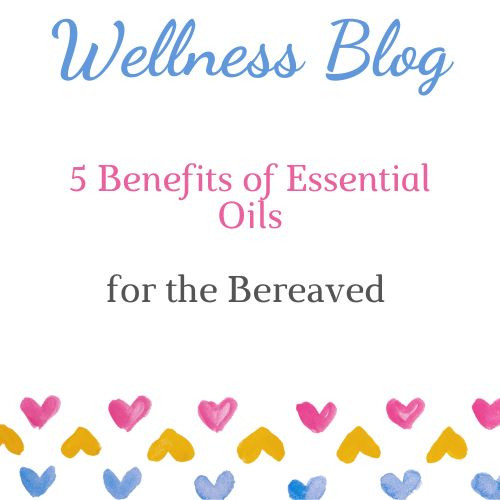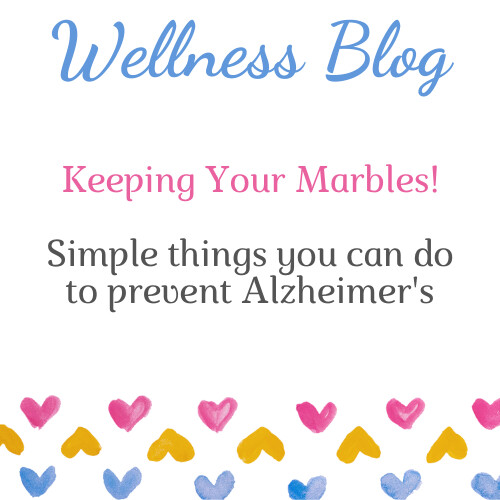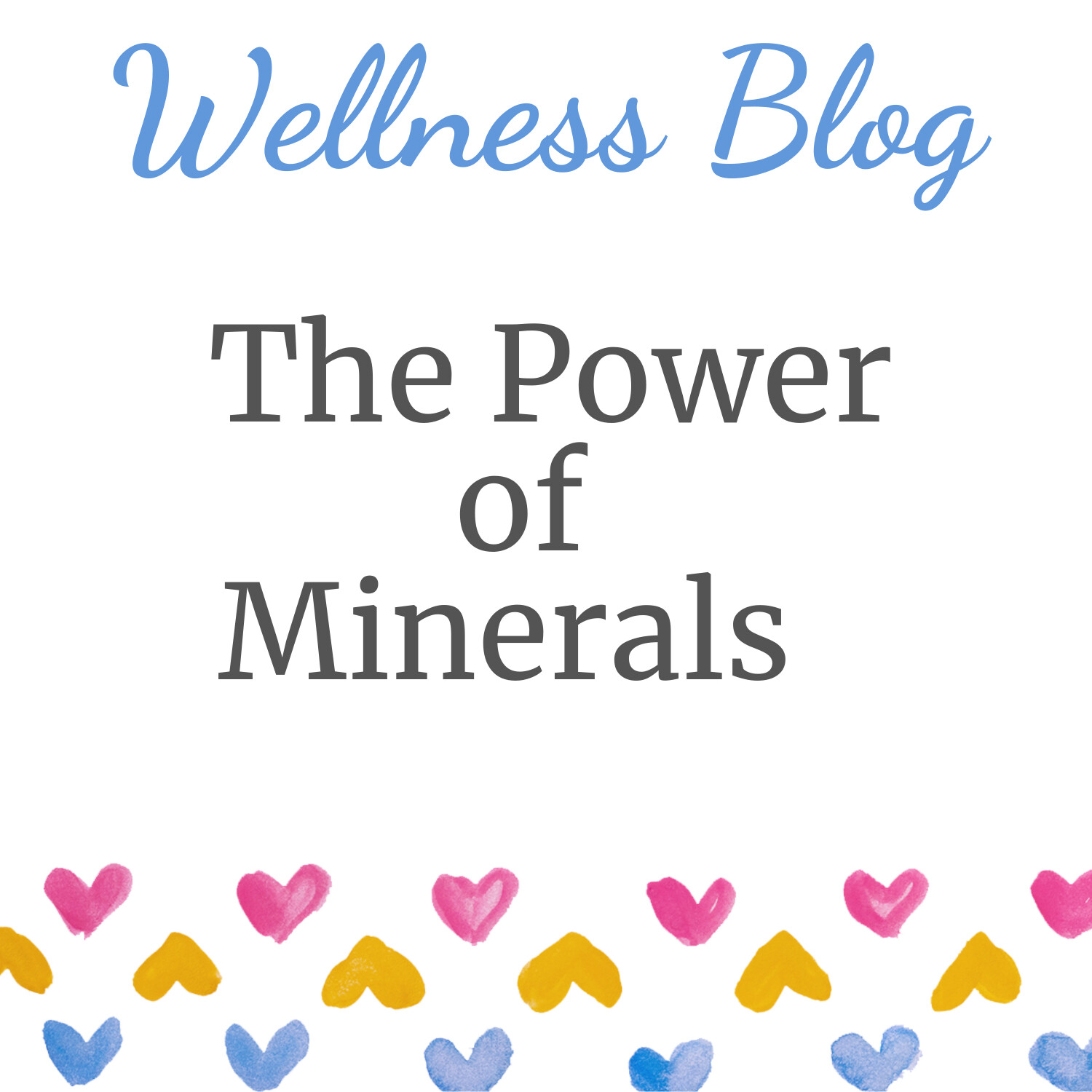
Here are 2 inhalers you can make to help you support 'seasonal changes' – so I’m going to make one for the daytime use and one for night time use but they are both going to address the same type of issues but the daytime one is going to be more supportive of you being awake and the night time will be more calming and therefore more supporting of night time use.
So first, here is what I am going to use – in case you haven’t seen one before, this is a blank inhaler and they have these two main parts, this is the cover and this is the part that you inhale and we are going to put this little cotton part inside the inhaler and there is this little top which I’ll snap on at the end. (if you watch the video at the bottom you will see this).
The daytime recipe is Black Spruce,
Read more...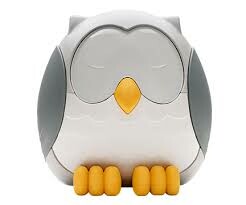
There appears to be some confusion regarding diffusers and their safe use, so here are some Q&As that may help to explain some areas to you.
How many drops of essential oil should I use in my diffuser?
I wish I could just give you a number, but it’s not that simple! It depends on many things
- the size of your diffuser
- how much water you put in the well of your diffuser
- the size of your room you are diffusing in
- the essential oil itself, and
- consideration for the person or people you’re diffusing for
As a rule of thumb use 1-4 drops per 100ml of water! The Desert Mist diffuser holds 200mls of water in its well so you could use a maximum of 8 drops if you filled the well up to its maximum level – and the Desert Mist diffuser is ideal for a room of about 10’ x 10’ or 3 x 3 meters.
You would also need to consider the essential oil – so if you chose Geranium, you would choose the lesser amount of drops as Geranium is very overpowering for a small room, but if you chose Lavender or Frankincense you could choose the maximum amount of drops as Lavender and Frankincense aren’t anywhere near as overpowering as Geranium.
Another consideration is the age of the recipient – if you are diffusing for a child or a senior and the diffuser is next to a bed for example, you could choose the smaller number of drops if the purpose of diffusing were for a calming atmosphere, or you may choose a higher number of drops (still within the 1 – 4 per 100ms of water) if you were diffusing to stay alert.
I want to use both Orange and Cedarwood in my diffuser – should I put them in the water separately or mix them together first?
When you choose to diffuse a combination of singles say Orange & Cedarwood in this example– the choice is yours - some people put 2 drops of Cedarwood and then 2 drops of Orange separately into the diffuser well – this is okay but you are not getting the real synergistic effect of these two oils - in my opinion, it would be far more beneficial to blend the Orange and Cedarwood together first, then add drops of that blend into the diffuser well. - Once you find a blend you love – you could make a batch bottle – so in a 5ml bottle – that holds approximately 100 drops – you could put 40 drops of Cedarwood and 60 drops of orange for example, or whatever combination you like, then use the number of drops you want to use in the diffuser – so 2 – 8 drops of this blend of two oils into your 200mls of water for this diffuser - I have a blend like this using Orange and Cedarwood - I call it my Christmas Blend and use it all year round! So if you were using 8 drops of this blend in your diffuser, the 5mls bottle that contains approximately 100 drops would be good for about 12 diffusing sessions (that’s 96 drops! if you are checking my maths!).
Do I really need to clean my diffuser? Yes, you really do! And it only takes a few seconds. It tells you how to do it in the instruction book that you get with your diffuser. The important thing to remember is that your guarantee could be invalid if you don’t follow the instructions, which state that the only substance you can use to clean your diffuser is rubbing alcohol. The instructions also state that your diffuser should be cleaned every time you change the essential oil.
I clean my diffusers about once a month – is that okay?
A big mistake many of us make is not to clean our diffusers enough! According to the instructions it should be cleaned after each use and after each change of essential oil. If you do clean your diffuser frequently it will definitely work more effectively and last much longer.
Is it okay to put my diffuser on a teak coffee table?
A common mistake is that if you are putting your diffuser on a wooden table, you need to put it on something and not directly on the natural wood table. You could ruin the table as when the water and oil droplets lands on the table it will leave a mark over time. I bought a clear glass chopping board and put that on my table with the diffuser on top so protecting the table, without taking away the visual impact of the diffuser.
Is it okay to diffuse two blends at the same time – for example Thieves and RC?
Each of blends were blended for a specific reason - so if you mix two blends together you are getting a watered down effect from using them alone – does that make sense? So you are not getting the full benefits of Thieves as you’ve mixed something with it, and you’re not getting the full benefit of the RC as you’ve mixed something with it – I would recommend you use the blends s they are – don’t add anything to them – you will get more benefit if you just alternate the blends rather than mixing them together.
Pets – a small diffuser will fill a 10’ x 10’ room, a larger diffuser will fill a 16’ x 16’ room – so the larger the room the larger the diffuser. For optimum results, your diffuser shouldn’t be on 24x7. A good recommendation is to diffuse for 30 minutes on followed by 30 minutes off. If a pet doesn’t like the smell, the pet will leave the room – that’s what animals do!
They are intelligent and will move away if they don’t like something – they know instinctively what’s good for them or not. My cat is over 20 years old and has lived her whole life with essential oils Just make sure there is an escape route for your pet, and if there isn’t then always use the on/off system just mentioned. I would always recommend using a water diffuser if you have pets. Some people use a nebusiser type of diffuser where the essential oils are not diluted at all - they come out neat - so this type of diffuser is not recommended if you have pets.
Cold water diffusing is the mildest form of diffusing so ideal if you have pets.


Nutrition Consultant & Clinical Aromatherapist
 Yes! a Bath Salts event in a Tepee! what fun!
Yes! a Bath Salts event in a Tepee! what fun!On Friday the 12 July I hosted a Bath Salts Session in the tepee based in Chiswick Business Park - where the Young Living European Headquarters have their offices. We were expecting a few people, probably about 10, but oh my goodness! it tuned into a drop in session and we ended up with over 20 - in a tiny tepee!
Susanna Buss - head of Education at YL Chiswick - opened the proceedings by informing everyone that it was the 25th Anniversary of YL and explained about the quality of our oils. The day before, 11 July, was International Essential Oils Day - so that's what we were celebrating, just a day late!
I started off with some general information about salts, in that Epsom Salts were one of the best to use for bath salts, but to get the maximum benefit from Epsom salts, you had to remain in the tub for at least 20 minutes - and for even more benefit a further 20 minutes. Apparently, the first 20 minutes the body is detoxing and the second 20 minutes the body is absorbing some of the minerals, in particular magnesium from the Epsom Salts. Technically, Epsom Salts are not a salt at all but Magnesium Sulfate.
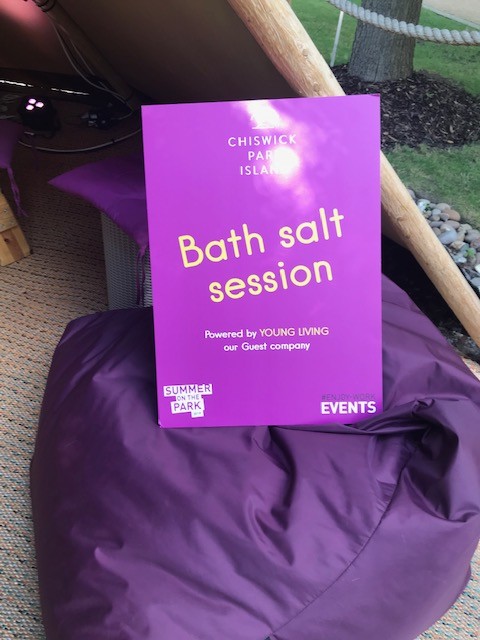 Our first objective was to make a bath salt blend to nourish body mind and spirit after a long hard day at the office, school or just whenever you need to totally relax and unwind.
Our first objective was to make a bath salt blend to nourish body mind and spirit after a long hard day at the office, school or just whenever you need to totally relax and unwind. The Rule of Thumb about quantities - only use a maximum of 5 drops of essential oil per bath .
Method : In a 4 oz jar, add 3 oz of Epsom Salts, or fine pink Himalayan salts or any fine salts of good quality. To that add 1 oz of vegetable oil - either V6 or coconut, or apricot kernel, something nice. Then add your blend of essential oils. There are so many blends you could choose - for the workshop I chose:
5 Drops of Lavender and
5 Drops of Cedarwood
If there were more time to explain more about the essential oils I would have chosen this luxurious blend (doubling the amount of salts - 20 drops of essential oils are enough for 4 baths at 5 drops per bath).
4 drops of Cedarwood
3 drops of Roman Chamomile
7 drops of Lavender
6 drops of Patchouli
The second formulation I gave the participants was a Morning blend to give you some get up and go on a Monday morning!
5 drops of Cedarwood again -good for grounding both mornings and evenings
5 drops of Orange - for uplifting and calming - (yes some essential oils can uplift and calm)
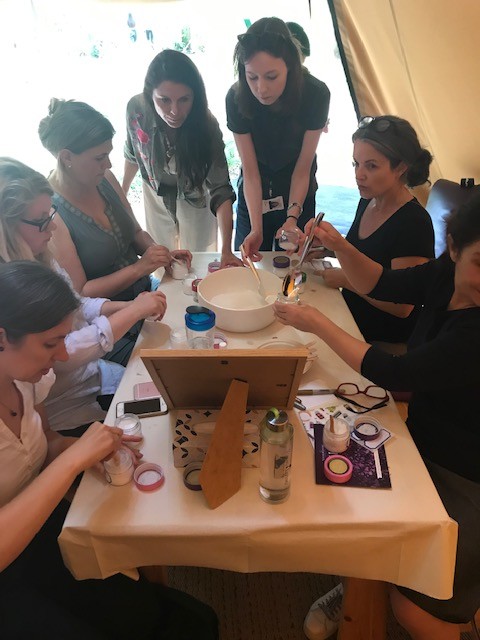
Here the students have filled their jars with the Epsom Salts and are now stirring in their 1 oz of vegetable oil. As water and oil don't mix, it is a good idea to add some vegetable oil as it gives the essential oils something to blend into, otherwise they would just float on top of the water, and this could cause some skin irritation to sensitive skins.
The picture below right shows me explaining about the blend with Susanna Buss looking on.
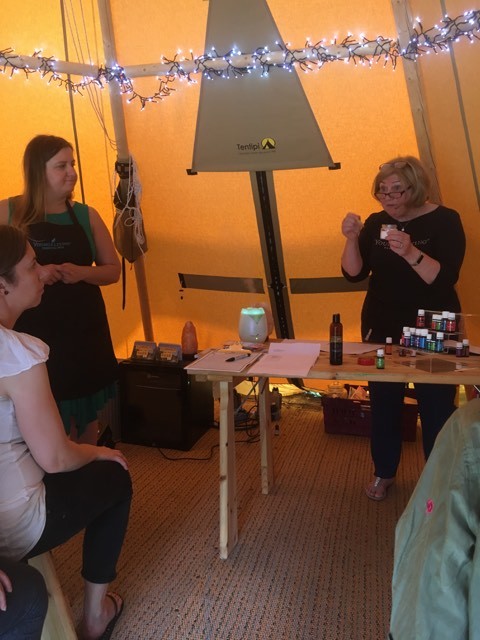
The next 'Make & Take' to be held at Young Living, Chiswick will be on Friday 13 September, 2019 - 5.30pm - 8.30pm - Workshop No. 1 in the 'Make & Take' Series
Please contact me or look under the Events tab for more information.
Suzie Webb
Nutrition Consultant & Clinical Aromatherapist

Simply put, hydrosol is the aromatic water that remains after steam-distilling botanical material. During essential oil distillation, pressurized steam passes through the plant product extracting the essential oils contained within the plant material. The steam and oil are condensed, the essential oil is decanted from the top of the oil/water mixture, and the water-based product left is hydrosol.
Hydrosol contains trace amounts of essential oils, as well as other hydrophilic (water-soluble) compounds native to the plant material. Generally speaking, the hydrosol contains the water-soluble chemicals from the plant, while the essential oil contains the hydrophobic, or non-water-soluble, chemicals. This helps explain the subtle differences in aroma and therapeutic quality between the essential oil and hydrosol derived from the same plant. Hydrosols still have the beautiful scent of the plant but tend to be gentler in nature.
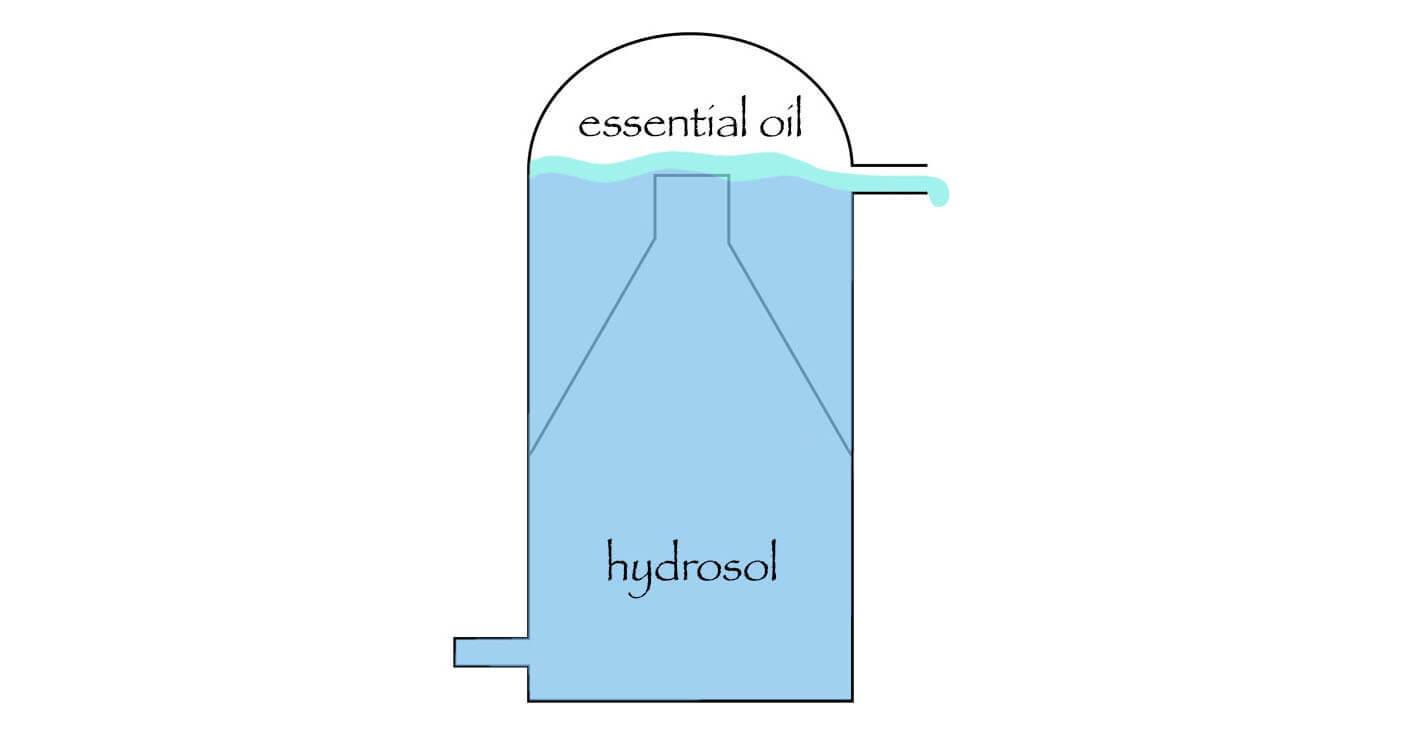
In her book Hydrosols: The Next Aromatherapy, Suzanne Catty states the following, “Hydrosols contain all of the plant in every drop… Here we have the water-soluble components, the essential-oil molecules, the very fluid that was flowing through the plant cells when the plant was collected. It’s all there in a matrix of water that is so much more than water…”.
It’s important to note that hydrosols are not simply essential oils blended into the water to form a mixture, rather they are the result of essential oil distillation. The best hydrosols are distilled from fresh, vibrant plant material and aren’t a byproduct of an essential oil distillation – they are the focus of the distillation!
Using Hydrosols
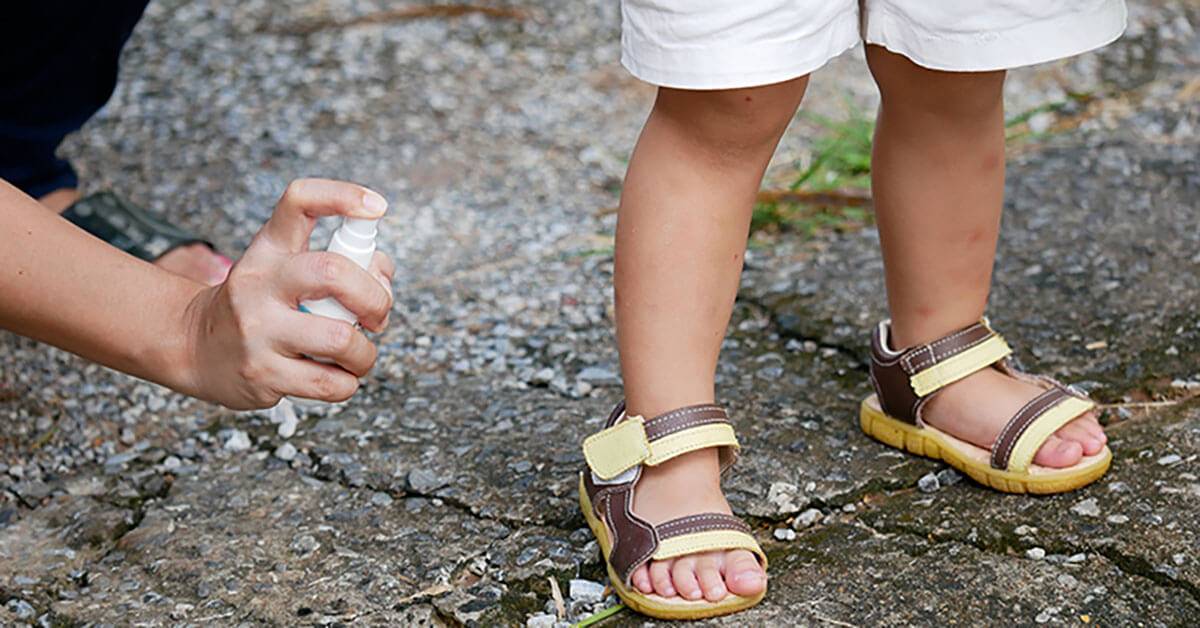
One of the great benefits of hydrosols is the variety of ways they can be incorporated into your daily life. The uses of hydrosols are wide-ranging, and because of their gentle nature, they can be used immediately without further dilution. They are also safe for use with children and have very few safety concerns. Below are some of our favorite ways to use these beautiful distillate waters:
- Acne Treatment
- Anti-bacterial Spray
- Anti-inflammatory agent
- Bathroom Freshener
- Beverage Flavoring
- Burn Relief
- Car Freshener
- Cleaning Product Base or Ingredient
- Facial Treatment
- General Health Tonic
- Immune System Support
- Insect Repellent
- Linen & Garment Spray
- Lymph System Support
- Natural Deodorant
- Perfume Base
- Room Freshener
- Situational Anxiety Relief
- Situational Depression Relief
- Skin Moisturizer
- Skin Toner
- Sunburn Relief
- Wound Care
Hydrosols are amazingly versatile in that they can be used by themselves or can be incorporated as an ingredient in a more complex aromatherapy blend.
Hydrosol Safety and Storage
There are some things to consider when working with hydrosols. Hydrosols have a 1-2 year shelf life and should be used within this period to avoid bacterial growth and keep the therapeutic vibrancy this product intact. Hydrosols are perfect candidates for the refrigerator! If you do notice any kind of bloom-forming in your hydrosol, you would want to replace this product with a fresh batch right away. Hydrosols do best in a sterile environment and anytime you are putting hydrosol into a bottle, and you want it or a blend to last for more than 1 week, you would want to sterilize the container with grain alcohol before filling it with hydrosol.
Hydrosols are gentle and perfect for young kids and children in general. A little German chamomile on a bruise or scrape is perfect for active kids to help them heal even faster from injury. A teaspoon of elderflower hydrosol in a tall glass of water can really help boost the immune system.
Hydrosol Recipe
Green Clay Mask
Ingredients:
- 1 drop of Rosemary ct Verbenone Oil Rosmarinus officinalis ct verbenone
- 1 drop of Cypress Oil Cupressus sempervirens
- 2 tsp of French Green Clay
- Enough to blend mask Frankincense Hydrosol Boswellia carterii
Directions:
- Combine all ingredients in a glass bowl.
- Once mixed, apply liberally to face and neck.
- Leave on for 10-15 minutes
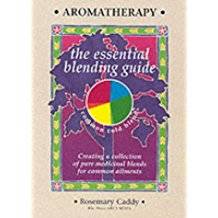
Many people I know are suffering with a 'summer' cold - so here is a great recipe to support you and which may alleviate it quicker. Whenever the word BLEND is used in this article it means a BLEND of essential oils that has not been diluted with a carrier oil. The Treatment Oil refers to a carrier oil with added drops of the BLEND.
The essential oils used in the Common Cold blend are:
Cedarwood Atlas (Cedrus atlantica)
Eucalyptus Blue Gum (Eucalyptus globulus) &
Peppermint (Mentha piperita).
Cedarwood Atlas – clears mucous and is recommended for bronchitis. It belongs to the Pinaceae family which is generally known for aiding respiratory conditions and is highly antiseptic.
Eucalyptus Blue Gum – clears nasal passages, reduces temperature and is excellent for all colds.
Peppermint – lowers fever, is a good expectorant and generally helps mental fatigue.
The Common Cold Blend:
20 drops Cedarwood Atlas + 10 drops Eucalyptus Blue Gum + 10 drops Peppermint
Make up your Common Cold blend with a total of 40 drops of the above oils (20+10+10) and store in a small dark glass bottle fitted with a dropper. (Label appropriately with date and blend details – note added by Suzanne!)
Massage – Add 12 drops of the Common Cold blend to 30 ml of Sweet Almond Oil to make up a supply of Common Cold Treatment Oil. Alternatively add 12 drops of the blend to 30 ml of body cream or lotion.
Massage chest, neck and upper back areas morning and night. Concentrate thumb massage around the vertebrae as this stimulates the action of the oils. A facial massage with this Treatment Oil helps sinusitis sufferers. Rub a small amount of Treatment Oil under the nostrils when going to bed.
Room Spray – Add 12 drops of the blend to 1 litre of water. Spray freely in any room.
Tissues – Place 2 to 4 drops of the blend onto a paper tissue. Wrap the tissue in foil and pop it in your pocket so that you can inhale the vapours from the tissue at regular intervals during the day. To ease congestion at night place such a tissue on the soles of your feet. The vapour from the oils passes around the body as you sleep.
Vapouriser/Diffuser – Place 4 to 6 drops of the Common Cold blend in the vapouriser/diffuser. It helps to keep the vapouriser going in any room where you are spending any length of time. This also guards against others contracting your condition.
Baths – Place 8 drops of the Common Cold blend into a warm bath. Relax and inhale the vapours. This is particularly helpful before going to bed. (mix with a little milk first for better distribution in the water – note added by Suzanne!).
Diet – Two or three garlic tablets each day are recommended. Cut down on all dairy food as this encourages the production of mucous in the system. Take regular doses of vitamin C tablets or drinks. Follow a light healthy diet of fruit and vegetables.
The Chemistry:
Chemical constituents to be found in the Common Cold Blend include:
Ketones – atlantone, pinocarvone, menthone
Alcohols – atlantol, cedrol, globulol, pinocarveol, menthol
Oxides – 1,8-cineole
Sesquiterpenes – cadinene, aromadendrene, germacrene, caryophyllene
The blend is well balanced.
The ketones and oxides help with the congestion.
The alcohols make it highly antiseptic.
The sesquiterpenes are calming.
Reference: The Essential Blending Guide by Rosemary Caddy – slightly amended by Suzanne Le Quesne


 Welcome to my Blog! I'm Suzie Webb you can read more about me
Welcome to my Blog! I'm Suzie Webb you can read more about me 